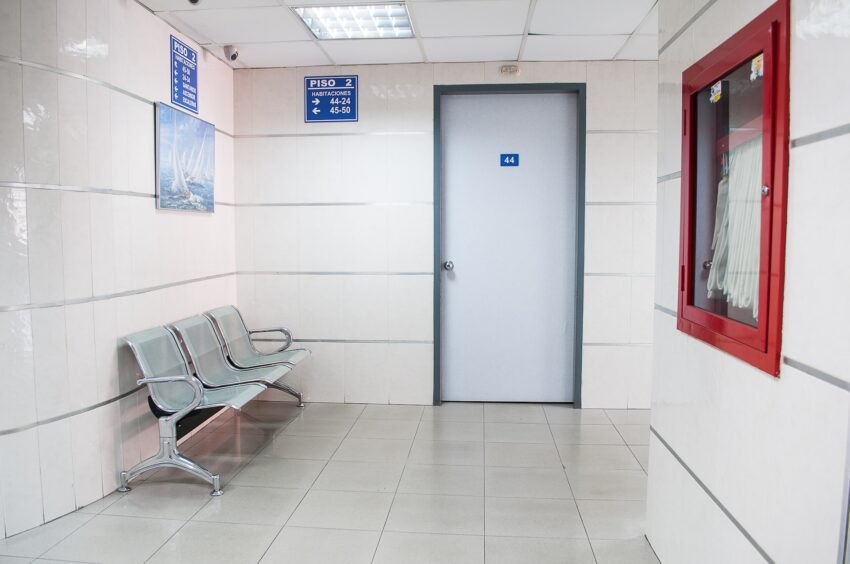Infection control is of extreme importance in clinical settings, from operating theatres to dentists to aged care facilities. There is a myriad of bacteria, viruses, parasites, and other harmful microorganisms that pass easily between humans, and any setting where people are unwell or have injuries or wounds has an increased risk profile.
Many of these harmful microorganisms are airborne (e.g. RSV, influenza virus, whooping cough, chickenpox) while others are transmitted on surfaces (e.g. adenovirus, coronavirus, rhinovirus, rotavirus, and several sexually transmissible infections). Some also spread directly person-to-person.
One of the most common and most concerning infectious agents in clinical settings – and the community – is MRSA.
What is MRSA?
MRSA is Methicillin-resistant Staphylococcus aureus or “Golden Staph”. It is a type of bacteria that is resistant to several penicillin-based antibiotics, meaning that it is difficult to treat. It lives on the skin, in the nose, or the mouth. For most people, it causes no issue.
MRSA is usually spread directly between people through contact with contaminated skin, towels, clothing, wound dressings, taps, door handles, or other surfaces.
MRSA is common in the community, and many people carry the bacteria without ever having an infection. Most people who are exposed to MRSA on the skin do not get infected. You are most vulnerable if you have a cut, scratch, or other impingement to the integrity of your skin.
What Impact Does MRSA Have?
In the community and outside of healthcare, aged care, and disability care settings, MRSA usually causes infections on the skin, though it can occasionally result in other types of infection, including bacterial pneumonia (affecting the lungs).
Untreated MRSA infection in a vulnerable person (e.g., elderly, immunocompromised, otherwise unwell, or undergoing surgery) can become systemic (spread throughout the body) and lead to sepsis. This is an extreme reaction by the body to infection. It is a medical emergency.
Within a healthcare setting, including nursing homes and hospitals, MRSA can be a much more serious issue and may result in pneumonia, surgical site infections, and bloodstream infections.
Not only is the bacterium rife within hospitals, but MRSA is the most common potential pathogen isolated from medical and scientific laboratory surfaces.
Symptoms of MRSA infection on the skin include:
· Redness
· Warmth
· Swelling
· Pain/discomfort
· Pus
· Fever
A severe, advanced infection can cause low blood pressure, shaking, confusion, and other life-threatening complications.
Who is at Risk from MRSA?
At least one in twenty people admitted to a hospital in the USA, for example, has MRSA in their nose or on their skin. Anyone can catch MRSA, and the site of an active infection is often an open wound like an abrasion, cut, blister, or surgical incision.
The bacteria spread in the community by direct contact with an infected person or with something they have been in direct contact with. This includes direct contact with a contaminated wound or indirect contact with razors, clippers, clothing, towel, or other surface that has directly touched the infected skin.
Risks are higher:
· In IV drug users (risk is 16-times higher)
· After surgery
· With an implanted medical device (hip replacement, artificial heart valve, pacemaker, etc)
· For hospital inpatients
· In daycare centres
· In school students
· People living in group accommodation (e.g., barracks, dormitories)
· In Athletes
· In people using shared equipment/supplies (e.g., gyms)
Managing the Risk
· Handwashing is essential. Always wash your hands after using the toilet, before eating and drinking, and when you have been outside the home, especially shopping, visiting a medical facility, or using public transport. Sanitise your hands and, where possible, also wipe down surfaces like shopping trolley handles before use.
· Shower or bathe often (preferably daily), using soap or body wash, and dry the skin thoroughly.
· Clean, disinfect, and cover open wounds like cuts, grazes, puncture wounds, and open blisters. Keep them covered until healed. Throw away used dressings or bandages.
· Wash towels and bedding frequently and in hot water, especially if you have a wound.
· Don’t share razors, towels, washcloths, clothing, and other personal items.
· Keep your home and work environment clean.
· Occupationally, adequate hand protection is of paramount importance in clinical settings, where MRSA thrives. Using the right kind of PPE (gloves) is essential in hospitals, surgeries, medical centres, dentists, laboratories, and other associated facilities. The use of disposable nitrile gloves in Australia is the minimum standard for protection in chemical labs and is also effective against MRSA transmission to the wearer. Even if you are caring for someone at home, protect your hands, especially if you have a wound on your skin.
· If you have reason to suspect you may have an infection (especially in a wound), cover the wound completely with a dry, clean dressing, don’t squeeze or try to pop it. Wash and sanitise your hands often. See your doctor promptly for a correct diagnosis and ongoing treatment. If you have a fever, you need to be seen by a doctor ASAP.
Taking care of yourself and avoiding MRSA is important not just for yourself and your family, but also for the wider community.


